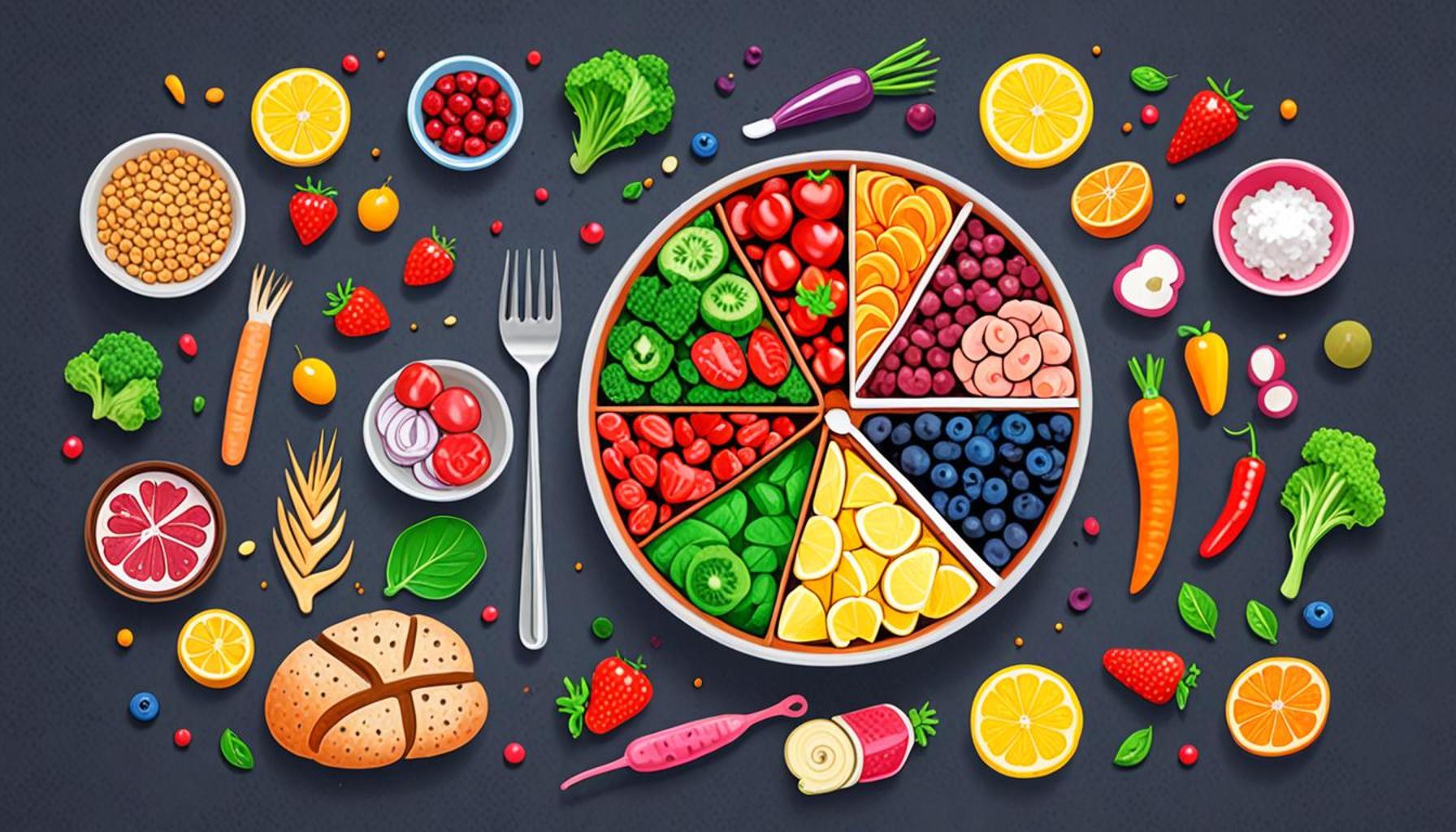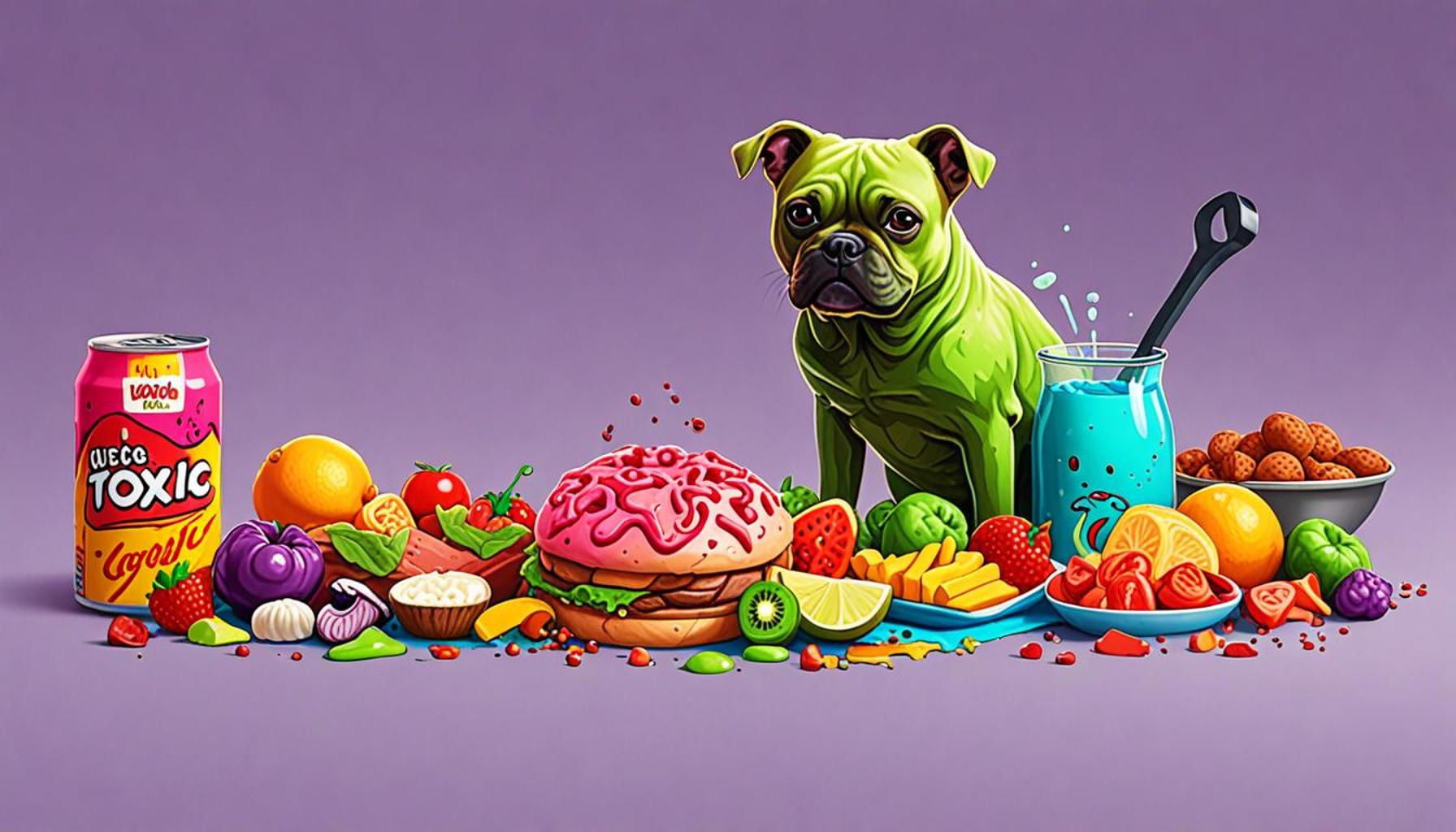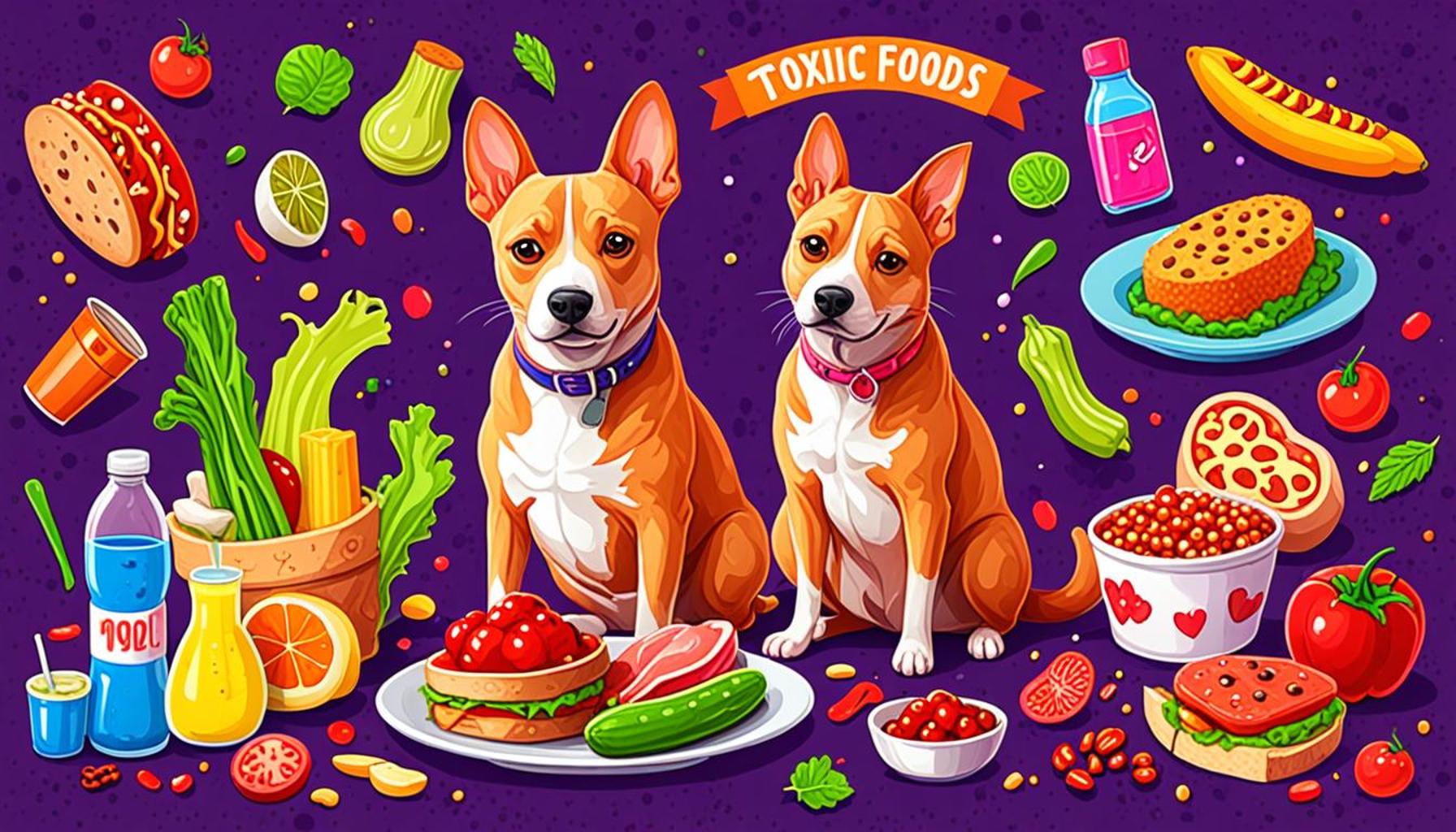The Importance of Portions and Weight Control in Pet Nutrition

Understanding Pet Nutrition
The well-being of our furry companions goes beyond just loving them. Portion control and weight management are vital aspects that contribute to their overall health. Pet owners often find themselves navigating a maze of information regarding what constitutes a nutritious diet for their pets. From the right amounts to the quality of food, understanding these elements can make all the difference.
Why Is This Crucial?
Obesity in pets is a rising concern, with approximately 60% of dogs and 56% of cats classified as overweight or obese in the United States. This alarming statistic signifies a trend that could have dire consequences. Just like with humans, excess weight can lead to various health complications, such as arthritis, respiratory issues, and a significantly reduced lifespan. Proper nutrition involves not only what pets eat but also how much they eat. The challenge lies in balancing their caloric intake with their energy needs; overfeeding, even with the healthiest options, can lead to weight gain and obesity.
Key Factors in Portion Control
- Understand Your Pet’s Needs: Factors like age, breed, and activity level play a significant role in determining the right amount of food. For instance, a high-energy puppy needs more calories compared to a senior dog who tends to be less active. Additionally, larger breeds might require different caloric intake levels than smaller breeds.
- Read Labels: Familiarize yourself with feeding guidelines on pet food packaging. Many commercial pet foods provide detailed insights regarding the daily caloric content and serving suggestions based on your pet’s weight and activity level. It’s crucial to follow these guidelines or consult with a veterinarian for adjustments.
- Regular Monitoring: Weigh your pet regularly to track their weight and adjust portions accordingly. A simple home scale can be used for smaller pets, but larger dogs may need visits to a veterinarian for precise measurements. Being disciplined about this can prevent unnoticed weight gain.
Potential Health Risks
Feeding your pet incorrectly can lead to serious health issues, such as:
- Diabetes, which can require lifelong management and complicates overall health.
- Joint problems that often arise from excessive weight can hinder mobility and impact your pet’s quality of life. For instance, larger breeds are especially prone to hip dysplasia, which could be exacerbated by obesity.
- Heart diseases, as excess weight puts additional strain on the heart, making it work harder to pump blood throughout the body.
By understanding the importance of portions and weight control, pet owners can take proactive steps to ensure their beloved companions live long, happy, and healthy lives. Engaging with your veterinarian for personalized dietary advice can also provide further insights, ensuring your pet receives the best care possible. In a world filled with mixed messages about pet diets, staying informed is key to making choices that benefit both your pet’s health and happiness.
LEARN MORE: Click here to discover the essential role of nutrition in your pet’s health
Balancing Calories and Nutrition
In the world of pet nutrition, the equation of caloric intake versus caloric expenditure is fundamental. Owners must evaluate not just what they feed their pets, but crucially, how much they feed them. Providing the right portions goes beyond simple arithmetic; it involves understanding nutritional needs and the impact of various nutrients on a pet’s health. For example, the ratio of protein, fats, and carbohydrates plays a significant role in sustaining energy levels while promoting overall wellness.
Understanding Energy Needs
To effectively manage your pet’s weight, you need to gauge their energy requirements accurately. The concept of Resting Energy Requirement (RER) is essential for this. RER varies by weight and can be calculated using the formula: RER = 70 x (weight in kg)0.75. For instance, a 10 kg dog has an RER of about 400 calories. From the RER, you’ll need to consider a multiplier based on activity levels to arrive at a targeted caloric intake. Active dogs may need up to twice their RER, while a sedentary dog requires less. This tailored approach helps prevent unwanted weight gain, ensuring your pet remains healthy and agile.
Navigating Nutritional Labels
Another critical step in portion control and weight management is deciphering nutritional labels. Understanding the ingredients and calorie counts is essential for making informed choices. When selecting pet food, look for products with high-quality protein sources listed as the first ingredient, as well as a balanced mix of carbohydrates and fats. Additionally, be mindful of any added fillers or artificial additives, which might contribute to excessive caloric intake without providing nutritional value. Many brands offer comprehensive feeding guidelines, but these often provide average recommendations; consulting with a veterinarian can help adapt these guidelines specific to your pet’s unique needs.
The Importance of Consistency
Consistency in feeding also plays a crucial role. Establishing a regular feeding schedule helps regulate your pet’s metabolism and can prevent obesity. Dividing daily food into several smaller meals can help maintain energy levels throughout the day while reducing hunger-driven begging behaviors, which are common in overweight pets. Furthermore, particularly with dry kibble, measuring out the portions daily instead of free feeding can encourage mindful eating habits, allowing you to monitor intake more effectively.
- Assess Dietary Adjustments: If your pet seems to be gaining weight, consider reevaluating their diet and reducing portion sizes gradually, rather than changing their food abruptly.
- Include Activity in the Equation: Regular exercise is vital for weight control. Aim for at least 30 minutes of physical activity each day, whether through walks, playing fetch, or engaging in interactive toys.
- Consult a Professional: Regular check-ups with your veterinarian can guide you in recognizing if dietary adjustments are necessary, ensuring your pet’s weight remains within a healthy range.
By deciphering energy requirements, understanding nutritional labels, and creating a consistent feeding routine, pet owners can take significant strides toward effective weight management. Investing time in navigating these aspects fosters a healthy lifestyle for pets, enabling them to thrive in their daily lives.
| Advantage | Explanation |
|---|---|
| Improved Health | Maintaining an appropriate weight reduces the risk of chronic diseases such as diabetes and arthritis in pets. |
| Enhanced Longevity | Pets that receive the right portions of food tend to live longer, healthier lives, significantly improving their quality of life. |
| Behavioral Benefits | Regular feeding schedules and controlled portions can lead to better behavior, as pets are less likely to exhibit food-related anxieties. |
| Cost-Effectiveness | Proper weight control can lead to fewer vet visits and a reduction in medical expenses associated with obesity-related health issues. |
Incorporating the right portions and maintaining weight control are crucial aspects of pet nutrition. Often overlooked, these elements can dramatically influence the overall health and happiness of our furry companions. Regularly monitoring your pet’s weight and adjusting their diet as needed helps combat potential health issues. This ensures that pets not only receive the necessary nutrients for optimal functioning but also enjoy a fulfilling life alongside their owners.
DISCOVER MORE: Click here for effective training techniques!
Implementing Practical Techniques for Portion Control
While understanding energy needs and nutritional labels forms the theoretical foundation of pet nutrition, practical techniques are essential for effective implementation in everyday feeding routines. Portion control often requires more than measuring cups; it may involve strategic thinking and creativity from pet owners to ensure they are meeting their pet’s specific needs adequately.
Using Measuring Tools
The simplest and most effective approach to portion control is utilizing precision measuring tools. A standardized measuring cup can help owners serve the precise amount of food their pet requires, eliminating guesswork. For those who use a variety of pet foods, consider investing in a digital kitchen scale that allows for accurate measurements based on weight—ensuring that each meal meets critical caloric standards. Even the most conscientious pet owners can miscalculate portions if not using proper tools, so adopting a disciplined approach can make all the difference.
Monitoring Weight and Adjusting Portions
Another key factor is monitoring your pet’s weight. Regular weigh-ins help inform necessary adjustments in food portions. This is particularly important for pets transitioning through different life stages. For example, kittens and puppies require more calories than adult animals, while senior pets may need fewer calories due to decreased activity levels. Owners can establish a routine to check their pet’s weight monthly, or even bi-weekly, to ensure they are neither gaining nor losing excessive amounts. If weight concerns are noted, a planned reduction in food intake by about 10% to 20% may be necessary, but always consult with a veterinarian before making significant changes for gradual dietary adjustments.
Engaging with Food
Engagement during meal times can also aid in portion control. Interactive feeding toys and puzzle feeders encourage pets to work for their food, stimulating both their mind and body. This can help slow down fast eaters, preventing bloating and promoting better digestion. As they engage with their meals, pet owners can simultaneously monitor the amount of food consumed, ensuring that portion sizes are not only appropriate but also stimulating for the pet’s overall well-being.
Transitioning Foods Carefully
Pet owners may be tempted to switch foods or introduce new treats; however, transitions need to be handled cautiously. Abrupt changes can lead to digestive upsets, and may also inadvertently lead to overeating if animals are not gradually introduced to new food types. A seamless transition involves mixing a small portion of the new food with their regular meal, increasing the proportions over a week or more to gauge how they adapt to the change. Incorporating this method will help pets acclimate without compromising their nutritional balance or overeating.
- Behavioral Signals: Pay attention to your pet’s behaviors, as uncomfortable signs such as bloating or lethargy can indicate overconsumption. Adjusting portions accordingly can alleviate such issues.
- Incorporate Vegetables: Low-calorie vegetables like green beans and carrots can be mixed into meals, providing bulk and nutrition without adding excessive calories. This practice enhances satiety while maintaining portion control.
- Track Food Intake: Maintain a food diary. Recording portion sizes, feeding times, and any deviations from routine can reveal patterns and help adjust future feeding strategies accordingly.
By employing measuring tools, actively monitoring weight, engaging pets during meal times, and transitioning foods carefully, pet owners can more effectively manage their pet’s weight. Such proactive efforts contribute significantly to a balanced diet and long-term health, fostering a happy, healthy pet regardless of their age or breed.
DISCOVER MORE: Click here for essential training tips
Conclusion
In conclusion, understanding the importance of portions and weight control in pet nutrition is essential for every responsible pet owner. Adequate portion sizes not only ensure that pets receive the vital nutrients they need but also prevent the serious health risks associated with obesity and malnutrition. Through the use of measuring tools, regular weight monitoring, and engaging feeding techniques, pet owners can take proactive steps toward promoting their animal’s overall well-being.
Additionally, gradual transitions between foods and being attentive to behavioral signals can enhance the pet feeding experience, keeping pets healthy and happy throughout their life stages. The adoption of healthy feeding practices fosters a stronger bond between owners and pets, leading to an enriching companionship.
As highlighted, tracking food intake and incorporating low-calorie fillers can provide a satisfying meal without compromising nutritional value. By leveraging the tools and knowledge available, pet owners can invest in their pets’ longevity and quality of life. Ultimately, prioritizing portion control and weight management lays the groundwork for a flourishing health journey for our beloved companions. As you embark on this journey, consider consulting with your veterinarian for personalized advice tailored to your pet’s unique needs. Make every meal count, and witness the transformative effects of informed nutrition on your pet’s vibrant life.



